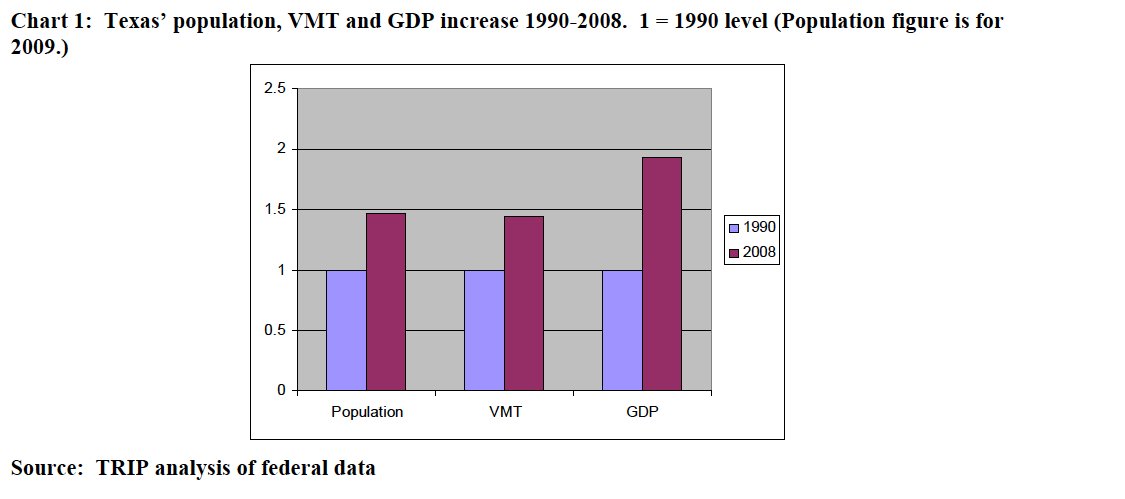THE ROAD INFORMATION PROGRAM
Executive Summary
Texas’ system of roads, highways, bridges and public transit provides the state’s residents, visitors and businesses with a high level of mobility. As the backbone that supports the Lone Star State, Texas’ surface transportation system provides for travel to work and school, visits with family and friends, and trips to tourist and recreation attractions while simultaneously providing businesses with reliable access for customers, suppliers and employees. Texas must improve its system of roads, highways, bridges and public transit to foster economic growth, keep business in the state, and ensure the safe, reliable mobility needed to improve quality of life in Texas.
As Texas looks to rebound from the current economic downturn, the state will need to enhance its surface transportation system by improving the physical condition of its transportation network and enhancing the system’s ability to provide efficient and reliable mobility. With unemployment in Texas nearly doubling from 4.4 percent in September 2007 to 8.1 percent in September 2010, making needed improvements to the state’s roads, highways, bridges and transit could provide a significant boost to the state’s economy by creating jobs and stimulating long-term economic growth as a result of enhanced mobility and access.
Insufficient roads cost the state’s drivers a total of $22.6 billion every year in the form of traffic crashes, additional vehicle operating costs (VOC) and congestion-related delays. Without a substantial increase in transportation funding at the local, state and federal level, Texas will be unable to complete numerous projects, leading to deteriorated road and bridge conditions, increased urban congestion and lost opportunities for economic growth.
- A lack of available transportation funding in the future is projected to lead to more deteriorated road and bridge conditions and increased congestion in the state’s major urban areas. Without additional funds, the state will be unable to complete many needed transportation improvement projects.
- TRIP estimates that Texas’ roadways that lack some desirable safety features, have inadequate capacity to meet travel demands or have poor pavement conditions cost the state’s drivers approximately $22.6 billion annually in the form of traffic crashes, additional vehicle operating costs and congestion- related delays.
- TRIP has calculated the cost to motorists of driving on roads that are deteriorated, congested and lack some desirable safety features in Austin, Dallas/ Fort Worth, El Paso, Houston and San Antonio. The following chart shows the cost breakdown for these areas.
- To ensure that federal funding for highways and bridges in Texas and throughout the nation continues beyond the expiration of SAFETEA-LU, Congress needs to approve a new long-term federal surface transportation program by December 31, 2010.
- The American Recovery and Reinvestment Act (ARRA) provides approximately $2.25 billion in stimulus funding for highway and bridge improvements and $375 million for public transit improvements in Texas.
- ARRA funding can serve as a down payment on needed road, highway, bridge and transit improvements, but it is not sufficient to allow the state to proceed with numerous projects needed to modernize its surface transportation system. Meeting Texas’ need to modernize and maintain its system of roads, highways, bridges and transit will require a significant, long-term boost in transportation funding at the federal, state and local levels.
Download full version: Future Mobility in Texas
About The Road Information Program (TRIP)
www.tripnet.org
“Founded in 1971, TRIP is a nonprofit organization that promotes transportation policies that relieve traffic congestion, improve road and bridge conditions, improve air quality, make highway travel safer and enhance economic productivity.”
Tags: Texas, The Road Information Program, TRIP, TX








 RSS Feed
RSS Feed